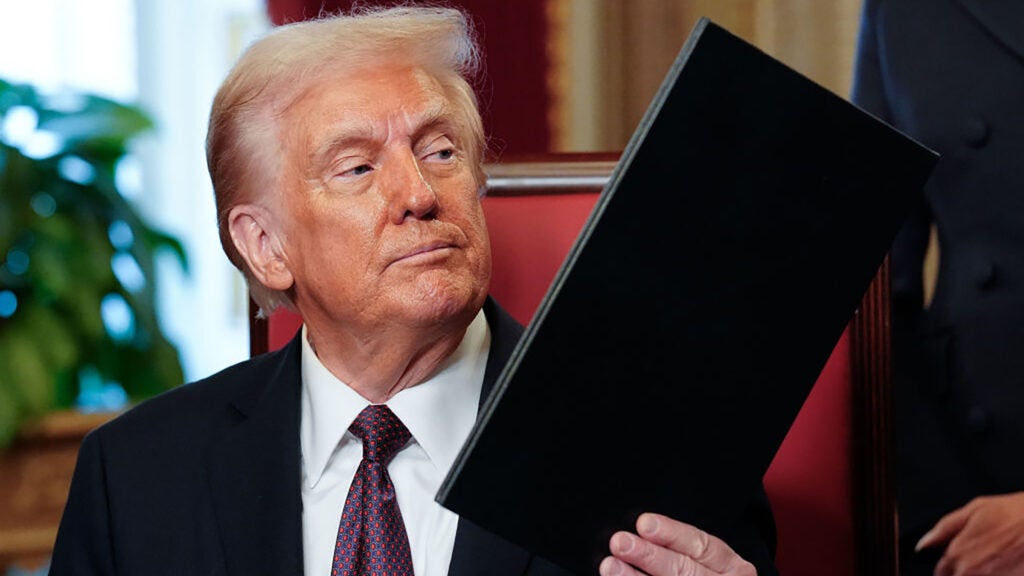In an unexpected shift within U.S. environmental policy, Donald Trump has initiated significant changes just weeks into his second presidential term. The swift alterations touch on public lands, outdoor recreation, and climate strategies, positioning them in alignment with a pro-extraction agenda. One such remarkable adjustment was the renaming of the tallest mountain in the nation from Denali back to Mount McKinley, alongside the withdrawal from the Paris Agreement, a critical international framework aimed at mitigating climate change.
Trump’s administration has also rekindled efforts to expand oil and gas leasing in sensitive areas, including the Arctic National Wildlife Refuge, and taken steps that could adversely affect endangered fish species through altered water management flowing from California’s San Joaquin Delta. Additionally, a federal hiring freeze has already begun impacting seasonal employment opportunities within the National Park Service, causing concern among those who advocate for conservation.
During his first term, Trump made controversial decisions, notably the downsizing of national monuments like Utah’s Bear’s Ears and Grand Staircase-Escalante. These changes reduced protected areas by nearly two million acres collectively, and more than a hundred environmental regulations concerning water and wildlife safeguards were rolled back. However, it’s important to recognize that Trump also championed significant conservation initiatives by signing into law the John D. Dingell Jr. Conservation, Management, and Recreation Act and promoting the Great American Outdoors Act, which collectively allocated billions for conservation efforts.
Impact on Outdoor Recreation
The current administration appears to be favoring concentrations on extraction over conservation, which has raised alarms among environmentalists. The nomination of North Dakota Governor Doug Burgum to head the Department of the Interior may continue this trajectory. Burgum has ties to the oil and gas industry but has also shown a commitment to promoting outdoor recreation and has created funding initiatives for trail development in North Dakota.
Despite the fears surrounding Burgum’s potential policies, some in the outdoor recreation community express cautious optimism. His past efforts to support outdoor activities as an economic driver in North Dakota signal a possible balance between energy production and outdoor enjoyment. However, critics worry that an increased focus on fossil fuel extraction could threaten the environmental integrity of public lands.
Relocation and Policy Shifts
The Trump administration previously shifted the Bureau of Land Management’s (BLM) headquarters to Grand Junction, Colorado, in a controversial move designed to centralize land management closer to the areas being governed. This relocation was reversed during the Biden administration, revealing the challenges of sustaining an effective management structure amidst high-level administrative changes.
Looking ahead, it is plausible that Trump will lean into his past policies that favored mineral extraction and land development. Utah Republicans anticipate further reductions in the size of national monuments which were previously established to protect critical habitats. Such actions echo broader objectives that have historically sought to dismantle protective measures of the Antiquities Act, which has safeguarded millions of acres of federal land.
The Future of Conservation Policies
As Trump’s second term unfolds, the outcomes of these policy decisions on public lands and the environment remain uncertain. His administration is expected to pursue aggressive deregulatory measures, prioritizing economic development over ecological conservation. The administration’s alignment with Project 2025—a guiding document penned by conservative think tanks—promises to target existing environmental protections aggressively.
Public sentiment appears to favor conservation over extraction, emphasizing the preservation of wildlife habitats and national parks. Research illustrates that a majority of Americans wish to see less emphasis on economically productive land uses such as drilling or mining. As the Trump administration charts its course, its response to these public expectations will be a crucial component of its long-term impact on America’s vast and diverse natural landscapes.
